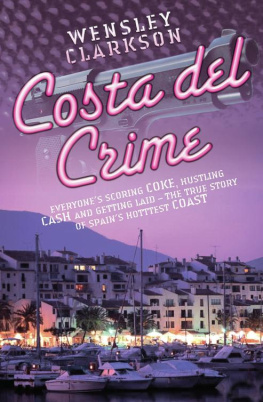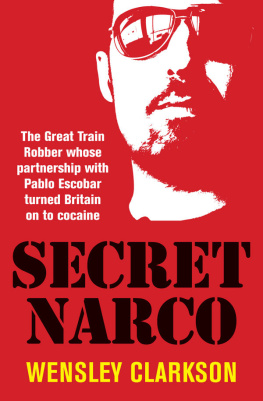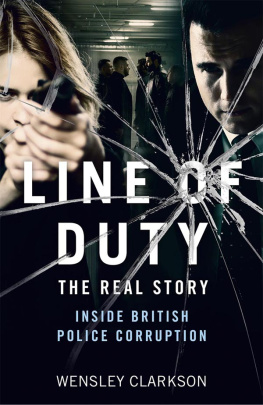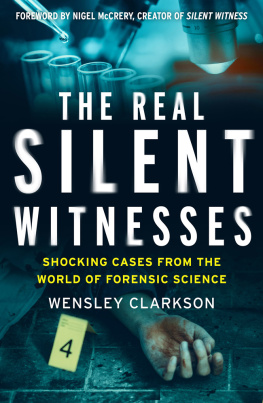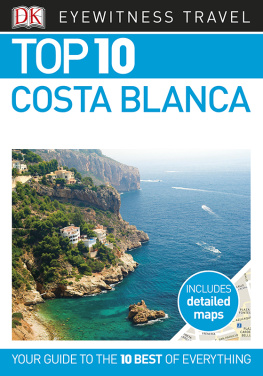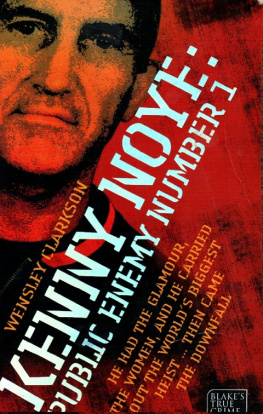Wensley Clarkson - Costa Del Crime
Here you can read online Wensley Clarkson - Costa Del Crime full text of the book (entire story) in english for free. Download pdf and epub, get meaning, cover and reviews about this ebook. year: 2006, publisher: John Blake, genre: Detective and thriller. Description of the work, (preface) as well as reviews are available. Best literature library LitArk.com created for fans of good reading and offers a wide selection of genres:
Romance novel
Science fiction
Adventure
Detective
Science
History
Home and family
Prose
Art
Politics
Computer
Non-fiction
Religion
Business
Children
Humor
Choose a favorite category and find really read worthwhile books. Enjoy immersion in the world of imagination, feel the emotions of the characters or learn something new for yourself, make an fascinating discovery.
- Book:Costa Del Crime
- Author:
- Publisher:John Blake
- Genre:
- Year:2006
- Rating:5 / 5
- Favourites:Add to favourites
- Your mark:
- 100
- 1
- 2
- 3
- 4
- 5
Costa Del Crime: summary, description and annotation
We offer to read an annotation, description, summary or preface (depends on what the author of the book "Costa Del Crime" wrote himself). If you haven't found the necessary information about the book — write in the comments, we will try to find it.
Costa Del Crime — read online for free the complete book (whole text) full work
Below is the text of the book, divided by pages. System saving the place of the last page read, allows you to conveniently read the book "Costa Del Crime" online for free, without having to search again every time where you left off. Put a bookmark, and you can go to the page where you finished reading at any time.
Font size:
Interval:
Bookmark:
To the good and bad residents of Southern Spain
I encountered while writing this book
Crime leaves a trail like a water beetle;
Like a snail, it leaves its shine;
Like a horse-mango, it leaves its reek.
OLD SPANISH PROVERB
Many of the characters featured here would not have made it into this book if it had not been for my numerous contacts on the Costa del Sol. Many of them, naturally, would rather you did not know their identity. So to all the faces Ive encountered, and to all the ordinary, law-abiding folk from southern Spain whove also helped me, I say thank you. Without you, this book would not have been possible.
Most of the dialogue used here was drawn from actual interviews. Some was reconstructed from available documents; a few descriptions were reconstituted from the memory of others. There are no hidden agendas in these stories, and I make no apology for the explicit sexual action and strong language.
On a number of occasions throughout the book, I have changed certain names. This has been done to protect both the innocent and the guilty.
Wensley Clarkson
Costa del Sol, 2006
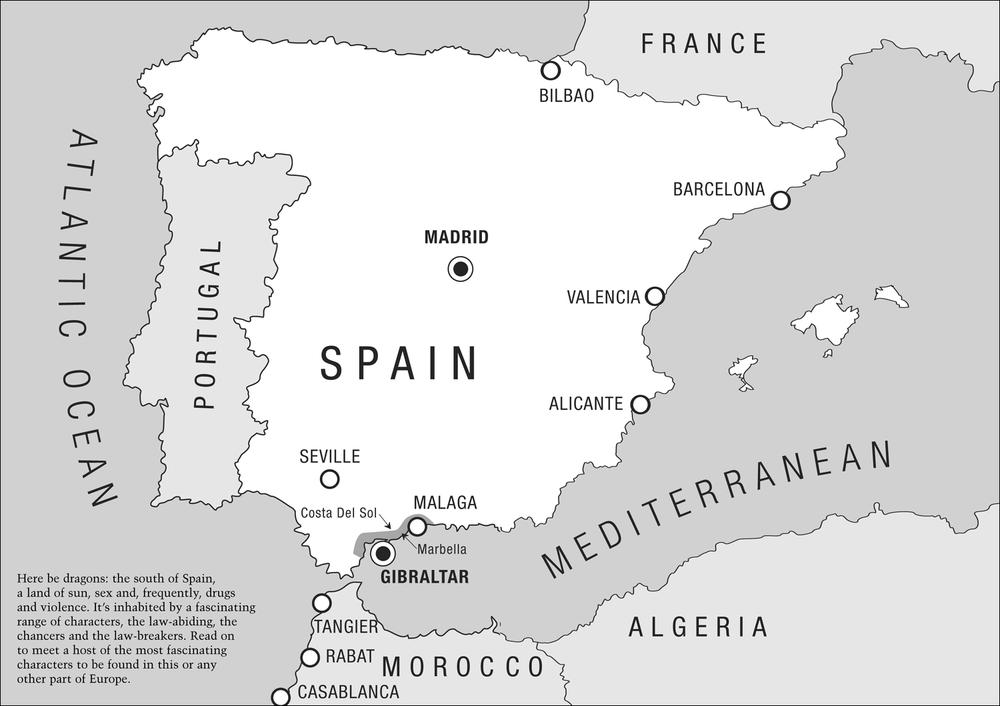
The average daily temperature on Spains Costa del Sol is 20 degrees centigrade, with at least 320 days of sunshine every year. Thanks to this wonderful climate, the gentle slopes and fertile plains that once rose up from the beaches of the Costa del Sol have been transformed into concrete jungles of hotels and high-rise apartments. Those who discovered seaside villages like Torremolinos and Estepona more than 30 years ago have watched in horror as the area has become overrun by tourists and foreign residents. And there seems little chance of it slowing down.
With more than 60 miles of beaches, including picturesque coves and vast overhanging cliffs, the area behind the shoreline used to feature acres of olive and fruit groves and sweeping pine-covered hills. But all that has been replaced by vast urbanisations of detached housing occupied by the Costa del Sols richer residents who have moved back towards the mountains to try and escape the lowlifes by the sea.
East from Estepona is a typical example: San Pedro, once a sleepy fishing village, is now dominated by bland concrete buildings and dual carriageways. Its attractive whitewashed houses, adorned with geraniums and jasmine in window boxes, used to provide a picture-postcard backdrop. They are now long gone.
Marbella remains a bustling seaside town with hundreds of bars and cafs. Old Marbella includes a Mudejar-style Church of La Encarnacion; marvellous buildings of Moorish design now serve as municipal centres. Travelling inland from Marbella is an area which was once the last Moorish stronghold on the Iberian Peninsula. This mountainous region features dozens of tiny villages, some up as high as 4,000 feet. But the Brits and other foreigners have already invaded these ancient communities by building characterless housing estates on any available land.
Back on the coast, the yacht marina down at Fuengirola contains some of the tackiest vessels afloat. Unattractive bars named after British pubs litter the area. A couple of miles further east on the coast is Torremolinos, first built up in the 1960s as a luxury holiday location by Spanish dictator Franco, and now in need of a lot more than a good lick of paint. Goodness knows what the Romans and Arabs who settled in the area almost a thousand years ago would have made of it all. Phoenician necropolises still stand in some towns, as do the remains of Roman aqueducts; but the areas history tends to be ignored by most of the Brits who have arrived in their droves since the 1960s.
In the bright sunshine of the modern-day Costa del Sol it is sometimes difficult to appreciate that this entire area has been developed in less than half a lifetime. Sleepy coves with crystal-clear water have been replaced by overcrowded beach bars featuring spivs, drug dealers and sexual predators; there is a constant noise of people and cars at all times of the day and night. No wonder the pace of life here is frenetic and local people are suspicious and unfriendly until they know precisely what it is you want.
Although the provincial government of Malaga is keen to continue encouraging tourists with open arms, it is also anxious to stem the tide of criminality so that in the long term this once beautiful area does not lose its appeal as a genuine holiday destination. But it is difficult to get away from the facts. Dotting the coastline used to be ancient stone towers and fortresses, which served as lookout posts during the Arab occupation of this part of Spain. These days the police are more likely to be watching for drugs smugglers and illegal immigrants. Marbella itself has become the unofficial capital of the Costa del Crime.
Few people realise that the murder rate in this part of Spain has risen by 70 per cent over the past 15 years. Crime itself is said to have doubled. Drug-related killings between gangsters are virtually a weekly occurrence. Clashes between British, Spanish, Eastern European and Russian villains are commonplace. They run businesses ranging from brothels to live internet sex services, from boat and property companies to satellite-TV installation firms; and then of course there are the obligatory multi-million-pound drug deals.
Crime is the Costa del Sols second-biggest industry after tourism. Its not an easy statistic to handle, is it? Tony Blairs Britain has seen a gold-rush to this area; and when British gangsters spend their millions, they help keep legitimate businesses afloat, especially in the thriving coastal resorts. When Spain tightened up its extradition laws in 1987, the commonly held belief was that all the big-name villains would find themselves without a bolthole and be sent home to the UK. But because the change in the law was not retrospective, many British criminals simply based themselves full time in southern Spain and became even more involved in illegal enterprises. As one old-time crook said, All that publicity about how the Spaniards had cracked down on us really took the heat off many of the big names down here and helped them thrive, because the reality was that the Spanish police were much easier to handle than the cops back home. And most of the characters out here havent broken any laws back in Britain for many years, so what can they be extradited for?
Headlines insisting that the glory days of the Costa del Crime are over are very wide of the mark. Back in 2001, the Home Secretary Jack Straw joined forces with his Spanish counterpart and claimed that, under new extradition rules, these British criminals in Spain could be brought back to the UK to face justice.
Despite signing a treaty with Spain back in 1985, the procedures remain complex and time consuming. A villain with a skilful lawyer can still drag out the procedure for months, and sometimes even years. It took nine months to extradite M25 killer and master criminal Kenneth Noye, despite this new spirit of co-operation.
These days, few of the numerous British villains on the Costa del Crime are on the run from justice. They pose as businessmen and earn fortunes while the Spanish authorities are either powerless to prosecute or, in some cases, simply turn a blind eye. Local police often take the attitude that, because the drug shipments never stay in Spain for long and most of the violence is between criminals, its not worth their while trying to arrest many of these characters. Incalculable fortunes, rather than sun, sea and sand, is now the allure of the Costa del Crime.
Font size:
Interval:
Bookmark:
Similar books «Costa Del Crime»
Look at similar books to Costa Del Crime. We have selected literature similar in name and meaning in the hope of providing readers with more options to find new, interesting, not yet read works.
Discussion, reviews of the book Costa Del Crime and just readers' own opinions. Leave your comments, write what you think about the work, its meaning or the main characters. Specify what exactly you liked and what you didn't like, and why you think so.

